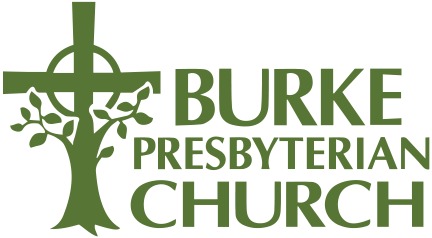John 15:1-12
“I am the true vine, and my Father is the vineyard keeper. He removes any of my branches
that don’t produce fruit, and he trims any branch that produces fruit so that it will produce even more fruit. You are already trimmed because of the word I have spoken to you. Remain in me, and I will remain in you. A branch can’t produce fruit by itself, but must remain in the vine. Likewise, you can’t produce fruit unless you remain in me. I am the vine; you are the branches. If you remain in me and I in you, then you will produce much fruit. Without me, you can’t do anything. If you don’t remain in me, you will be like a branch that is thrown out and dries up. Those branches are gathered up, thrown into a fire, and burned. If you remain in me and my words remain in you, ask for whatever you want and it will be done for you. My Father is glorified when you produce much fruit and in this way prove that you are my disciples. “As the Father loved me, I too have loved you. Remain in my love. If you keep my commandments, you will remain in my love, just as I kept my Father’s commandments and remain in his love. I have said these things to you so that my joy will be in you and your joy will be complete. “This is my commandment, that you love one another as I have loved you.
O Lord uphold me, that I might uplift thee. Amen.
The Gospel of John reads like a poem. One I imagine the late Mary Oliver would love.
An image from nature emerges, crisp and familiar. I see the vineyard, the vineyard keeper,
tromping in God’s muddy boots, snapping off brown branches and trimming curly green vines, eyeing a plump grape, beaded with rainwater. Then in a flash of truth, which is the way poets work, the vineyard is life itself. We are green vines. What is trying to flow is love. What is trying to grow is joy. What are we to do… oh people of God? John says we remain. Some translations prefer abide. We stay.
It tempting to respond, “Is that all? Hang in there?” I confess I often prefer the practical
to poetic. Sometimes I prefer Mark’s gospel that moves breathlessly from one Jesus exchange to the next. Sometimes I relish Matthew, all the heft of Hebrew scholarship crashing into the Jesus moment. Sometimes I want to pound the pulpit with Luke, bringing that social justice heat into view. But John, poetically, quietly says remain. Remain connected. Stay grafted into the true vine. Abide.
It strikes me – as I watch the news of so much tearing apart, everywhere we look – that
remaining, abiding together in God’s love, might be the most important call there is. And the hardest.
Some years ago, I attended a clergy lunch. Well, it turned out it was bring your own
lunch, which not everyone read in the email, a cost saving plan that would have been forgivable had not the coffee pot also malfunctioned, pouring coffee all over the table. We were not starting off on the right foot.
Regular pastor talk ensued. “What do you worship?” “We worship about 200, but our
ASAs are up 300%. The bounce house ministry has helped.” Folks turn their heads to the large bounce house in the Fellowship Hall, kids rising and falling on a random Thursday. People said, “hmm,” which is the sound of being both refined and wildly impressed. I said, “Excuse me – ASAs? I am not familiar.” Four people chanted together Average Sunday Attendance. “We have metrics for everything. I could tell you how many givers you need per parking space to remain in ministry.” Another pastor said sheepishly, “We were just told that we are not viable.
Our building to clergy ratio is not good. The consultant’s graph gives us 2 years, tops.” Folks
sighed. A Rabbi blurted out, “Does anyone else find this deeply disturbing? I want my people to be talking about God, not parking space graphs.” An African American Baptist named Michelle’s eye welled up with tears. “Yes, by all those numbers, we have no future. We make no sense. We are a little church that has taken big risks to be a welcoming space for all God’s children. And you know what…. We actually believe that Jesus wants this congregation to remain.”
I left that not-lunch meeting, my stomach grumbling. My heart was grumbling too.
Which one tells us who we are? Is it the graph or the graft, our connection to that stubborn vine of Jesus Christ?
The graph says congregations are losing members, says the cultural winds are in our face,
says churches are splintered and hurting and our country is fraying at its seams.
The graft, that ancient vine, says, “love one another. Bear fruit.”
The graph says there is not enough. Not enough young families. Not enough pledging
units. Not enough hours in the day to turn this ship around.
The graft says, “my grace is sufficient.” It says, “I am about to do a new thing. It springs
up. Do you not see it?”
The graph says, “Your worth and viability are found in columns 1 and 2 of the annual
statistical report.” The graph haunts pastors, “If it’s all about numbers, go ahead and calculate what you earn per hour, all those holidays. You’d make a lot more money working at Target.”
But the graft holds on ever tighter. We hear our voices echo what Peter said, “Where
would we go, Lord? You alone have the words of life.” The graft sets our feet on a rock, puts a new song in our mouth. We even trip over shoots of new growth that we had no idea were even there. It was not one of our Session’s 3-year goals, but there it is, beaded with the waters of baptism.
Now, don’t get me wrong. I love graphs. I am the daughter of two Presbyterian
accountants. That means I am predestined to value numbers. But, I have become convinced that when we worship a few of our numbers, when we give them authority to dictate our identity and viability, we have made them into an idol. That is true of bank accounts and scales. It is true of church budgets and attendance. The graph may tell us about our past. But only the graft, the place where we connect with the grace of Jesus Christ, lays claim to our present and our future.
At BPC, I notice the graph has no patience for millennials who visit for years but don’t
join. The graph is flummoxed by children who go to Rainbow or IMPACT whose parents may not attend. The graph considers the hypothermia shelter and CROP Walk, community table and the preschool, to be mere journal entries. When hundreds of people packed into this church to grieve the beloved person who far died too young, the graph callously ticks down by 1. And the person who has overcome serious hurdles to get here, physically, emotionally or even theologically, the graph says sorry, you’re 1. Please do not mention the 30-70 people on Zoom to the graph. It breaks out in hives. I have started feeling bad for the graph. The graph keeps falling exhausted as lines blur between the congregation and community. It is bewildered by new patterns of commitment and connection.
And, it’s not just our graphs that are sweating. You see, Since the 70s, companies and
non-profits have changed their measurements too. Most have abandoned the idea of a single bottom line. Most talk about their impact as an organization, rather than just a set of inputs and outputs. Did you know that Netflix doesn’t use Nielson ratings? They prefer to assess how their company is doing by how their content affects the culture. Caring most about how their content affects the culture. Sounds familiar.
Even an amazing graph can’t do all of that, but the graft can. The true vine curls around
new people well. It can go up and deep down. It can go out and in. This vine operates on the
funny math of God where mustard seeds multiply into subversive and hospitable trees, and a few loaves multiply into food for thousands. This vine actually thrives with pruning… Because when something dies, new life comes.
I suspect most of us feel like we are inhabiting this agricultural meantime, this middle
place between staring at this old vine and seeing the harvest. We want to trust God to bring this good work to fruition. We want to trust light and the waters to do their thing, but we also want to, ahem, help God along.
So, rather than rely on Matthew, Mark, Luke and John, most churches listen to four other
voices at the table. Anxiety, let’s imagine all the ways that this could go south. Perfectionism, we must have everything in order so that there can be no doubt that we did our part correctly.
Moral outrage, we don a protective layer of rage because we believe conditions in our world may have grown too harsh for vulnerable love, even if that makes our fruit taste bitter. And finally, dread, this fear that we are one generation away from withering alone on this vine. 1 I truly believe that Jesus Christ is cultivating a ministry of courage at BPC. Courage to remain in this together. Courage to be honest to God church. Courage to face our life, our death, our mysterious God, our disagreements and our unknown future, without letting anxiety, perfectionism, rage or dread poison us to a hungry world. If living is what we are about, we must be brave and hang on to God and each other every day. Anxiety would have us check the graph every day to see if the roots are growing. Anxiety would prefer a small indoor pot where we can
1 Gratitude for these four lovely words of Barbara Brown Taylor in her sermon The
Automatic Earth, found in the book Mixed Blessings.
avoid the snow of doubt and the heat of pain. But clinging to the true vine means we will dwell outside. But we will grow hearty with courage.
According to John, the fruit of abiding together in Christ’s love is complete joy. I have
seen that joy in our church and the larger church. Joy in the smaller church that springs up where mega-plants wouldn’t fit. Joy in the larger church who knows last year for better or worse doesn’t not define them. Joy in the sound of Kenyan congas twirling around a Steinway and people hanging in there together across all kinds of divides. Joy in the nimble choir that claps its hands and learns to sway. Joy at the sight of affordable housing units winding around old sanctuaries. Joy as the old walls of prejudice and shame crumble away under the heft of the vine of Christ.
You see, joy has never been linear. It has always preferred details that the graph misses.
The teardrop that hangs on the edge her nose as she entrusts her deceased husband to the church triumphant. The curl of a baby’s ear. The hymn that catches in your throat. And the table of Christ where we taste Christ’s grace and in the face of all the dividing walls of hostility in this world, we remain here together.
And I think I remember what the chief end of humanity is…
Was it to populate the graph on an annual basis and improve it forever?
No, I don’t think so. I bet there are some Sunday School teachers here who can help me with the Westminster Catechism. The chief end of humanity is:
To glorify God and ENJOY God forever.
May it be so!

